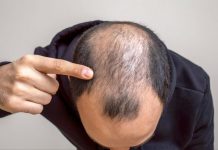Cholelithiasis (as we medical folk will call them), or ‘gallstones’ (as everyone else will call them), affect around 10 percent of the population. I was reminded of this the other day when one of my motor racing friends was admitted with acute abdominal pain – diagnosis Gallstones – treatment laparoscopic surgery.
Now, when I was a student, we were given the mnemonic Fat, Fair, Female, Fertile and Forty as being the catchy 5F’s to remind us of the ‘typical’ gallstone sufferer. However, that catchy mnemonic, like all catchy mnemonics, isn’t quite true as 10 percent of men also have gallstone problems, such as my friend who is neither Fat, Fair, Female, Fertile nor Forty.
Unsure where your gall bladder is hiding? It is found under your lower ribs on the right side of your body and is attached to the underside of your liver and is involved with digestion. In its natural healthy state it is like a hollow sausage attached by a tube (the bile duct) to your “stomach”. It is when it gets gallstones inside it that you begin to get a problem.
So where do these gallstones come from? Well, 80 percent of them are made of our old friend Cholesterol, or Cholesterol mixed with pigment, that’s why you can get such pretty colors, though I am yet to see any made into a necklace, but it could catch on, I suppose. The Cholesterol stays in solution until something happens to slow down the emptying of the gall bladder, or thicken the solution, such as happens during fasting. This results in what we call biliary “sludge” which then hardens and turns into gallstones.
Factors which increase the likelihood of developing gallstones include increasing age, obesity, a diet high in animal fats and certain medical conditions such as diabetes. Oh yes, pregnancy also increases the incidence. (With all these problems that can happen with procreation, it is a wonder the human race has got this far!)
The management of gallstones has also changed dramatically over the past 20 years because of three main factors. The first was the development of Ultrasound visualization. At last we had a way of diagnosing gallstones. Not only could we now “see” the gallstones, but we could tell if they were the cause of the pain by being able to pick out inflammation in the gall bladder wall.
The second development was ERCP (you know how we love acronyms in medicine) which stands for Endoscopic Retrograde Cholangio Pancreatography. At the end of the operating telescope (the Endoscope) the surgeon can sneak into the bile duct and scoop out stones that are blocking the duct which have been causing jaundice.
The third development was Laparoscopic Cholecystectomy and was pioneered in 1987 by a French surgical team. Instead of practically sawing you in half to get at the gall bladder, hiding under the liver, this is a much less invasive method, where the operating laparoscope is inserted through a small incision in the abdominal wall, and the surgeon does the job under the direct vision. While this results in less trauma, shorter hospitalization and quicker recovery, it is not always technically possible and the operation may have to be converted to the older “open” method.
It is also important to remember that gallstones can be found incidentally, and if they are causing no problems, the answer is simply to leave them alone. That’s right – just because we can show that you have gallstones, this does not automatically mean you will end up on the surgeon’s table. The chances of developing symptoms over 20 years are about 18 percent the good books tell me, so with an 82 percent chance of getting off with nothing, who is going to volunteer for an operation? My Doctor son Jonathan Corness has reminded me that we should always treat the patient, and not the test! That goes for many conditions that we may find as an incidental finding. If it ain’t broke, don’t fix it!
My friend had his gallstones removed by Laparoscopic Cholecystectomy and was up and about the day after surgery and discharged the day after that.
However, if you get an acute attack of upper abdominal pain, your doctor will suspect gallstones until proven otherwise.




